The 2000 Honda Civic is a compact car that has been a popular choice among drivers for its reliability, fuel efficiency, and practicality.
This model comes equipped with a range of features that enhance comfort and safety, making it a versatile option for everyday commuting or long drives.
The Civic offers a front air conditioning system, ensuring a comfortable cabin temperature for all occupants. In terms of safety, it is equipped with passenger airbags and an anti-theft alarm system.
The audio system includes an AM/FM stereo, providing entertainment on the go. The Civic’s dimensions offer ample space for passengers, with generous headroom and legroom in both the front and rear seats.
Under the hood, it is powered by a 1.6-liter engine, producing 106 horsepower and offering good performance for city and highway driving.
The Civic’s fuel efficiency is commendable, with a rating of 32 mpg in the city and 37 mpg on the highway.
The suspension system features double wishbone suspension in both the front and rear, providing a smooth and comfortable ride.
With a seating capacity for five people and a maximum cargo capacity of 12 cubic feet, the Civic offers practicality and versatility for various needs.
Whether you’re looking for a reliable daily driver or a fuel-efficient car, the 2000 Honda Civic is worth considering.
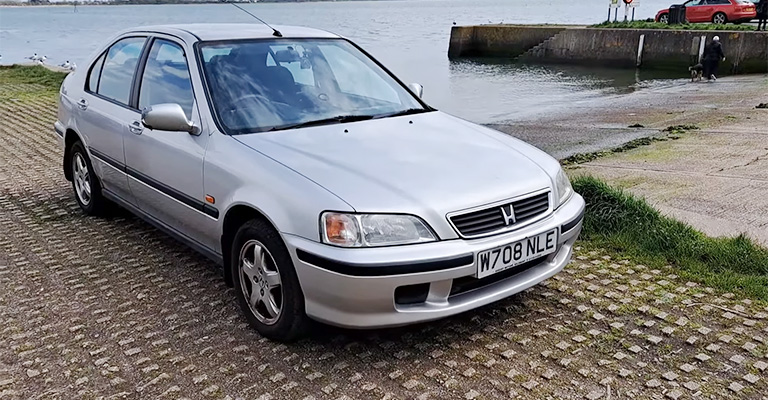
Key Specifications of the 2000 Honda Civic
- Engine: 1.6L I-4 engine
- Horsepower: 106 hp @ 6,200 RPM
- Torque: 103 lb.-ft. @ 4,600 RPM
- Transmission: 5-speed manual or 4-speed automatic
- Fuel Efficiency: 32 mpg (city) / 37 mpg (highway)
- Front Suspension: Double wishbone
- Rear Suspension: Double wishbone
- Front Brakes: Ventilated disc
- Curb Weight: 2,359 lbs
- Seating Capacity: 5
- Cargo Capacity: 12 cu.ft.
- Overall Length: 175.1 inches
- Overall Width: 67.1 inches
- Overall Height: 54.1 inches
The Good
- Reliability: The 2000 Honda Civic has a reputation for being a reliable and durable vehicle, known for its long-lasting performance.
- Fuel Efficiency: With its efficient 1.6L engine and lightweight design, the Civic offers impressive fuel economy, making it an economical choice for daily commuting and long drives.
- Safety Features: The Civic is equipped with passenger airbags and an anti-theft alarm system, providing essential safety measures for occupants and vehicle security.
- Practicality: The Civic offers comfortable seating for up to five passengers and has a decent cargo capacity, making it practical for daily errands or road trips.
- Handling and Ride Quality: The double wishbone suspension in both the front and rear contributes to a smooth and composed ride, while also enhancing the car’s handling capabilities.
The Bad
- Limited Power: While the 106 horsepower generated by the 1.6L engine is adequate for most everyday driving scenarios, those seeking a more spirited performance might find it lacking compared to sportier options.
- Outdated Technology: As a model from the year 2000, the Civic may lack some of the modern technology and convenience features found in more recent vehicles.
Improvements Compared to Previous Models
Compared to previous Honda models in its segment, the 2000 Honda Civic introduced several notable improvements:
- Enhanced Styling: The 2000 Civic received updated exterior styling, featuring a more aerodynamic and modern look compared to its predecessors.
- Improved Safety: The inclusion of passenger airbags as a standard safety feature was a significant improvement, providing increased protection for occupants in the event of a collision.
- Refined Suspension: The introduction of a double wishbone suspension system in both the front and rear of the Civic resulted in improved ride quality, handling, and stability compared to previous models.
- Increased Power and Efficiency: The 1.6L engine offered in the 2000 Civic provided a balance between power and fuel efficiency, delivering a slight increase in horsepower compared to earlier models while maintaining excellent fuel economy.
- Upgraded Technology: Although not as advanced as today’s vehicles, the 2000 Civic featured technological improvements such as an AM/FM stereo radio, offering entertainment options for drivers and passengers.
The Trim Levels of the 2000 Honda Civic
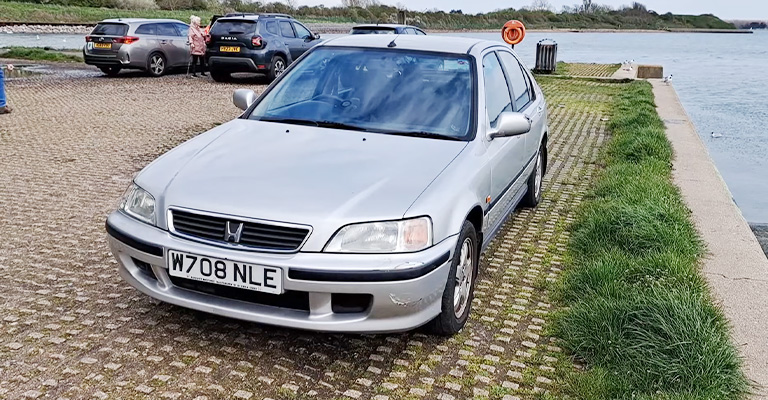
The 2000 Honda Civic was available in multiple trim levels, each offering different features and options to cater to various customer preferences. Here are the trim levels available for the 2000 Honda Civic:
1. DX
The DX trim level was the base model of the 2000 Civic lineup. It featured essential amenities and provided a reliable and economical driving experience.
Key specifications included a 1.6L I-4 engine, producing 106 horsepower, a 5-speed manual transmission, and front-wheel drive. The DX trim also included front air conditioning, an AM/FM stereo radio, ventilated front disc brakes, and speed-proportional power steering.
2. LX
The LX trim level added more comfort and convenience features to the Civic. In addition to the features available in the DX trim, the LX trim offered power windows, power door locks, cruise control, and keyless entry.
It provided a more upscale experience while maintaining the Civic’s efficiency and reliability.
3. EX
The EX trim level focused on providing additional technology and luxury features. It included all the features available in the LX trim and added a power moonroof, alloy wheels, and an upgraded audio system with a CD player.
The EX trim also offered additional safety features such as anti-lock brakes (ABS) and a remote anti-theft alarm system.
Comparison Table of the 2000 Honda Civic Trim Levels
| Trim Level | Key Features |
|---|---|
| DX | 1.6L I-4 engine, 5-speed manual transmission |
| LX | Power windows, power door locks, cruise control |
| EX | Power moonroof, alloy wheels, upgraded audio |
| system with CD player, ABS, remote alarm system |
Performance of the 2000 Honda Civic

Engine Size, Power, and Type
The 2000 Honda Civic came equipped with a 1.6L I-4 engine. This engine size provided a balance between power and efficiency, making it suitable for everyday driving.
Horsepower (Hp)
The 1.6L engine generated 106 horsepower at 6,200 RPM. While this horsepower rating may not be particularly high compared to more performance-oriented vehicles, it is sufficient for typical driving scenarios, including city commuting and highway cruising.
The Civic’s focus is more on efficiency and reliability rather than sheer power.
Torque
The Civic’s 1.6L engine delivered a torque of 103 lb.-ft. at 4,600 RPM. Torque represents the rotational force that the engine generates and is crucial for acceleration and overall performance.
The torque output of the Civic’s engine provides adequate low-end power, making it responsive and capable for day-to-day driving needs.
Transmission Options
The 2000 Honda Civic offered two transmission options: a 5-speed manual transmission and a 4-speed automatic transmission. The choice of transmission can impact the car’s performance and driving experience.
The manual transmission provides more control and engagement, allowing the driver to make precise gear changes. On the other hand, the automatic transmission offers convenience and ease of use, particularly in stop-and-go traffic.
Fuel Efficiency
The 2000 Honda Civic excelled in fuel efficiency, making it an economical choice for drivers. It achieved an estimated fuel economy of 32 mpg in the city and 37 mpg on the highway.
The Civic’s efficient engine, lightweight design, and aerodynamics contributed to its impressive fuel efficiency, resulting in fewer trips to the gas station and lower overall fuel costs.
Suspension and Handling
The Civic featured a double wishbone suspension system, both in the front and rear. This type of suspension design provided a balance between comfort and agility.
It offered a smooth ride over bumps and improved handling by maintaining good tire contact with the road.
The double wishbone suspension contributed to the Civic’s responsive steering and composed handling characteristics, making it enjoyable to drive.
Braking System
The 2000 Honda Civic was equipped with ventilated disc brakes in the front. Ventilated discs provide better heat dissipation, reducing the chances of brake fade during prolonged or aggressive braking.
This braking system offered reliable stopping power, enhancing overall safety and control while driving.
Additional Performance Measuring Factors
- Acceleration: While specific acceleration figures were not provided, the Civic’s 106 horsepower and torque figures provided adequate acceleration for daily driving scenarios, allowing for smooth merging and overtaking maneuvers.
- Top Speed: The top speed of the 2000 Honda Civic varied based on the specific model and engine configuration. However, it typically ranged between 110-120 mph, depending on the conditions and modifications (if any).
- Handling and Maneuverability: The Civic’s compact size, responsive steering, and well-tuned suspension contributed to its nimble handling and maneuverability. It offered precise cornering and stability, allowing drivers to navigate through tight city streets or winding roads with confidence.
Off-road Ability Depends on Several Factors, Including
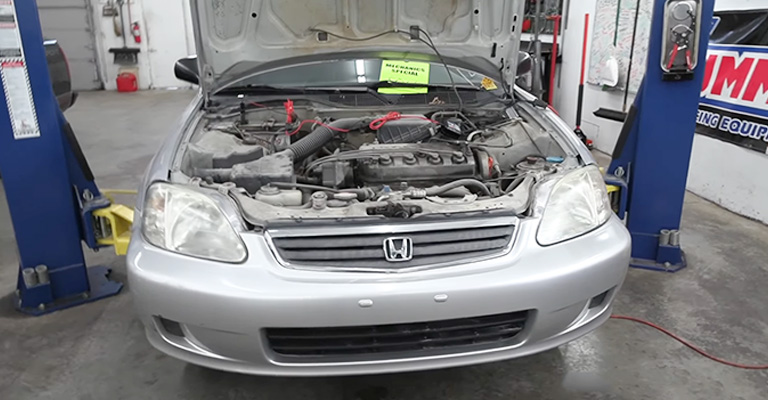
Off-road ability depends on several factors that contribute to a vehicle’s performance in challenging off-road conditions. While the 2000 Honda Civic is primarily designed for on-road use and is not specifically optimized for off-roading, let’s explore some key factors:.
Four-wheel Drive
The 2000 Honda Civic is predominantly a front-wheel-drive vehicle and does not come with four-wheel drive (4WD) capabilities. Four-wheel drive is typically beneficial for off-roading as it provides improved traction and better handling on uneven terrain.
Ground Clearance
The ground clearance of the 2000 Honda Civic is not explicitly mentioned. However, it is worth noting that the Civic is a compact car designed for urban environments, and its ground clearance may not be as high as that of dedicated off-road vehicles.
The relatively lower ground clearance may limit its capability to traverse rough terrain or obstacles encountered during off-road adventures.
Traction System
The 2000 Honda Civic did not feature advanced off-road traction systems like locking differentials or off-road-specific modes. It primarily relied on its front-wheel-drive setup to provide traction in normal driving conditions.
Towing Capacity
The 2000 Honda Civic offers various models with different towing capacities. The Coupe models include the GLi with a 1.6L petrol engine and 4-speed automatic transmission, capable of towing up to 800kg when braked.
The VTi-R Coupe, equipped with a 1.6L petrol engine and 5-speed manual transmission, has a slightly lower towing capacity of 600kg when braked.
In the Hatchback category, models such as the CXi, CXi Sport, and GLi, all featuring a 1.6L petrol engine and 4-speed automatic transmission, have a towing capacity of 600kg when braked.
However, the Vi Hatchback stands out with a 1.7L petrol engine and 4-speed automatic transmission, offering a higher towing capacity of 1200kg when braked.
The Hatchback models with a 5-speed manual transmission, including the CXi, CXi Sport, GLi, and Vi, have the same towing capacity of 600kg when braked.
Lastly, the Sedan models, such as the GLi and GLi Sport with both 4-speed automatic and 5-speed manual transmissions, as well as the VTi with a continuously variable transmission, all have a towing capacity of 600kg when braked.
| Body Type | Model | Engine | Transmission | Towing Capacity (Braked) |
|---|---|---|---|---|
| Coupe | GLi | 1.6L, Petrol | 4 SPEED AUTOMATIC | 800kg |
| Coupe | VTi-R | 1.6L, Petrol | 5 SPEED MANUAL | 600kg |
| Hatchback | CXi | 1.6L, Petrol | 4 SPEED AUTOMATIC | 600kg |
| Hatchback | CXi Sport | 1.6L, Petrol | 4 SPEED AUTOMATIC | 600kg |
| Hatchback | GLi | 1.6L, Petrol | 4 SPEED AUTOMATIC | 600kg |
| Hatchback | Vi | 1.7L, Petrol | 4 SPEED AUTOMATIC | 1200kg |
| Hatchback | CXi | 1.6L, Petrol | 5 SPEED MANUAL | 600kg |
| Hatchback | CXi Sport | 1.6L, Petrol | 5 SPEED MANUAL | 600kg |
| Hatchback | GLi | 1.6L, Petrol | 5 SPEED MANUAL | 600kg |
| Hatchback | Vi | 1.7L, Petrol | 5 SPEED MANUAL | 1200kg |
| Sedan | GLi | 1.6L, Petrol | 4 SPEED AUTOMATIC | 600kg |
| Sedan | GLi Sport | 1.6L, Petrol | 4 SPEED AUTOMATIC | 600kg |
| Sedan | VTi | 1.6L, Petrol | SPEED CONTINUOUS VAR | 600kg |
| Sedan | GLi | 1.6L, Petrol | 5 SPEED MANUAL | 600kg |
| Sedan | GLi Sport | 1.6L, Petrol | 5 SPEED MANUAL | 600kg |
Cargo Space and Storage
The Civic offered a decent cargo capacity of 12 cubic feet, providing sufficient room for everyday needs such as groceries, luggage, or smaller items.
While this cargo space may be adequate for general use, it may not be as spacious as larger vehicles or SUVs, which are often preferred for off-roading adventures requiring significant cargo capacity.
Additional Considerations
Given its design and intended use, the 2000 Honda Civic may not possess the specialized features or capabilities required for extensive off-roading.
It is more suitable for urban and suburban driving, providing efficient transportation and a comfortable ride.
It is important to consider that if you are specifically interested in off-roading or require a vehicle with significant off-road capabilities, exploring dedicated off-road vehicles or SUVs may be a better option.
These vehicles often come equipped with features such as higher ground clearance, 4WD systems, and more rugged suspension components to tackle challenging off-road conditions effectively.
Exterior and Styling of the 2000 Honda Civic
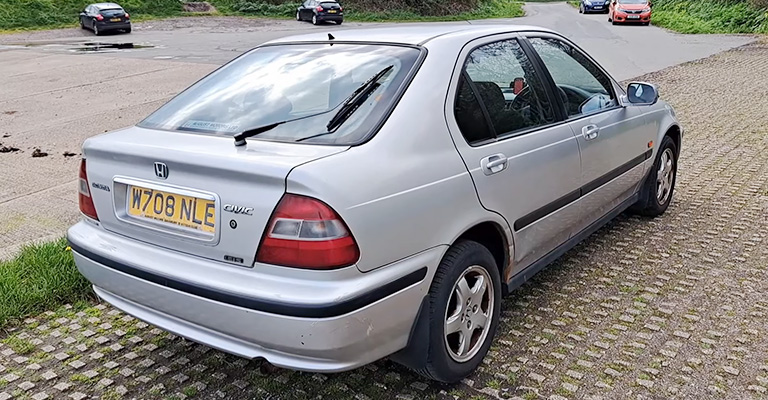
The 2000 Honda Civic featured a contemporary and aerodynamic exterior design. Its sleek lines and compact proportions gave it a modern appearance that was appealing to many.
The Civic’s exterior design showcased Honda’s attention to detail, with clean body contours and well-integrated components such as headlights, taillights, and bumpers.
While it may not have had the boldness or aggression of some sportier models, the Civic’s styling was timeless and has remained popular among enthusiasts.
Interior Design and Aesthetics
The interior of the 2000 Honda Civic showcased a functional and straightforward design. The cabin featured a well-organized layout with easily accessible controls and logically positioned instruments.
The use of quality materials and well-finished surfaces added a touch of refinement to the interior. The Civic’s interior design prioritized practicality and user-friendliness, creating an environment that was comfortable and conducive to an enjoyable driving experience.
Smoothness of Drive
The smoothness of the 2000 Honda Civic’s drive was commendable for a vehicle in its segment. The combination of the well-tuned suspension system, precise steering, and balanced weight distribution contributed to a smooth and composed ride.
The Civic’s suspension absorbed most road imperfections, providing a comfortable driving experience even on uneven surfaces.
While it may not have offered the same level of refinement as higher-end luxury vehicles, the Civic’s smoothness of drive was competitive and satisfactory for its class.
Ergonomics
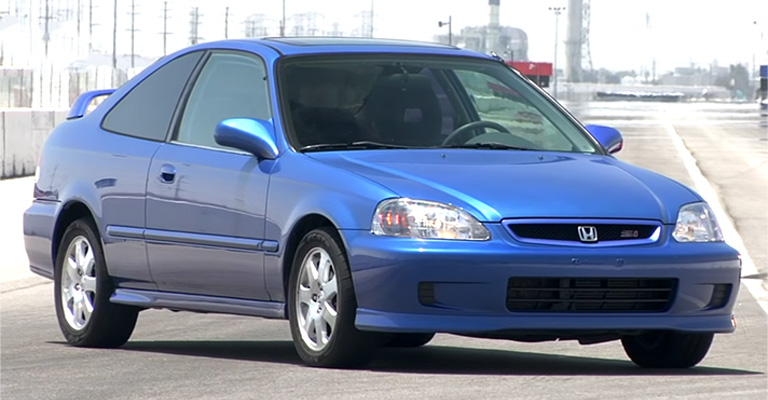
Upper Dashboard Size
The upper dashboard of the 2000 Honda Civic had a moderate size, offering a good balance between visibility and ease of use.
The placement of essential controls and instrumentation was well-positioned and within the driver’s line of sight for easy access.
Driving Position
The Civic provided a comfortable and ergonomic driving position. The seats were supportive and offered adequate adjustability, allowing drivers to find their preferred driving position.
The placement of the pedals, steering wheel, and gear shift lever was optimized for easy reach and optimal control.
Controls and Instrumentation
The controls and instrumentation in the 2000 Civic were intuitive and user-friendly. The layout of buttons and knobs on the center console and steering wheel was well-designed, providing easy access to essential functions such as audio controls, climate controls, and cruise control (available on certain trims).
The instrument cluster offered clear and legible gauges, providing important information to the driver at a glance.
Visibilities and Sightlines
The Civic offered good overall visibility and sightlines, allowing drivers to have a clear view of the road and their surroundings.
The windshield and side windows provided ample visibility, while the slim pillars minimized blind spots.
Rear visibility was aided by the inclusion of a rear defogger and well-placed side mirrors.
Comfort and Seating
The seating in the 2000 Honda Civic was comfortable and supportive, providing a pleasant driving experience. The front seats offered adequate cushioning and bolstering for long drives,
while the rear seats accommodated passengers with sufficient legroom and headroom for a compact car. The materials used for the seats were durable and of good quality, ensuring comfort and longevity.
Additional Considerations
The Civic’s ergonomics focused on creating a user-friendly and comfortable driving environment. The placement of controls, the visibility from the driver’s seat, and the overall seating comfort were prioritized to enhance the driving experience.
Overall, the 2000 Honda Civic demonstrated good attention to ergonomics, providing an interior that was well-designed and comfortable for both the driver and passengers.
The emphasis on user-friendly controls and visibility contributed to a pleasant driving experience.
Safety Features and Iihs Safety Ratings
The 2000 Honda Civic was equipped with several safety features to ensure the well-being of its occupants. While specific safety features may vary depending on the trim level and optional packages, some standard safety features include –
- Dual front airbags: The Civic came with dual front airbags, providing protection for the driver and front passenger in the event of a collision.
- Anti-lock braking system (ABS): ABS helped prevent wheel lock-up during emergency braking, enabling the driver to maintain steering control.
- Anti-theft alarm system: The Civic featured an anti-theft alarm system to deter potential theft or unauthorized entry.
- Child safety locks: Rear doors were equipped with child safety locks to prevent accidental opening.
- Seatbelt pretensioners: The seatbelt pretensioners tightened the seatbelts during a crash, minimizing the forward movement of the occupants.
- Side-impact door beams: The Civic had reinforced side-impact door beams to enhance the structural integrity and protect occupants during side-impact collisions.
As for safety ratings, the Insurance Institute for Highway Safety (IIHS) conducts crash tests and evaluates vehicles for their safety performance.
However, as the 2000 Honda Civic is more than two decades old, IIHS safety ratings for this specific model may not be readily available.
It is important to note that safety features and ratings have significantly evolved since 2000, and newer Civic models offer more advanced safety technologies.
Warranty Coverage and Reliability
The warranty coverage and reliability of the 2000 Honda Civic may vary based on the region and individual vehicle history.
As a general rule, warranty coverage typically lasts for a specific period from the date of purchase or a certain mileage threshold, whichever comes first.
However, warranty terms and conditions may have expired for a vehicle of this age. In terms of reliability, Honda vehicles, including the Civic, have a reputation for being reliable and durable.
Honda has historically been known for producing vehicles with robust engines, solid build quality, and long-lasting components.
Proper maintenance and regular servicing are essential to maintain the reliability and longevity of any vehicle, including the 2000 Honda Civic.
Life Expectancy
The life expectancy of a vehicle depends on various factors, including maintenance, driving conditions, usage patterns, and individual care.
With proper maintenance and care, the 2000 Honda Civic can have a reasonably long life expectancy.
Many Civics from this era have been known to last well over 200,000 miles with regular upkeep.
However, it is important to note that individual experiences may vary, and factors such as maintenance history and driving habits can influence the lifespan of a specific vehicle.
Oil Type Used
The 2000 Honda Civic typically uses 5W-30 viscosity grade engine oil. It is recommended to refer to the owner’s manual or consult with a certified mechanic to ensure using the appropriate oil type for the specific engine variant and local climate conditions.
Problems
As with any vehicle, the 2000 Honda Civic may experience certain issues over time due to wear and tear or specific model-related concerns. Common problems reported by some owners of this model year include:
- Transmission issues: Some owners have reported transmission problems, such as slipping gears, difficulty shifting, or premature failure. Regular maintenance and prompt attention to any transmission issues are essential.
- Rust: Depending on the region and climate conditions, the Civic’s body may be susceptible to rust, particularly in areas prone to salted roads during winter months. Regular inspections and rust prevention measures can help mitigate this issue.
- Suspension components: Some owners have reported issues with suspension components, such as worn-out bushings or struts. Proper maintenance, including regular inspections and timely replacements, can help prevent or address these concerns.
Other Honda Civic Models –

Leave a Reply